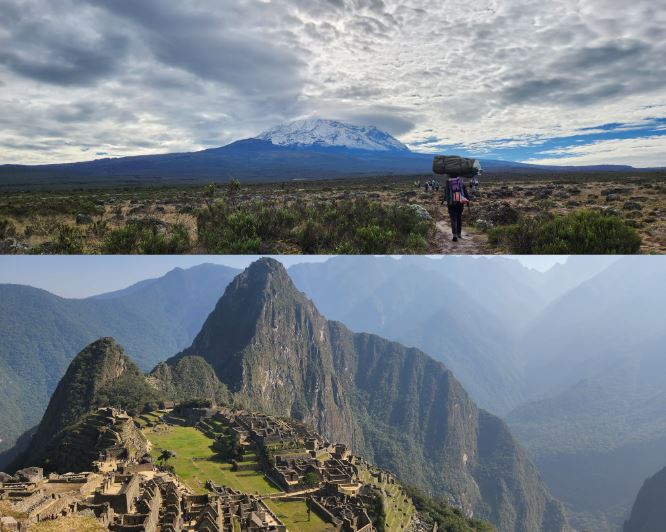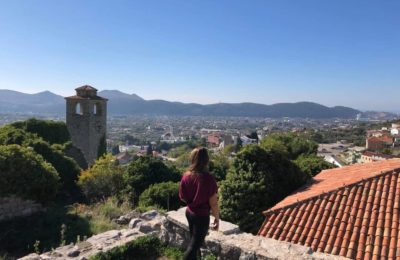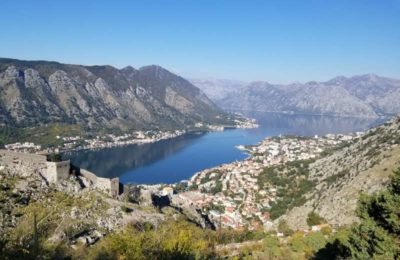In mid-September 2022, I was on a high. I had just spent four magical days trekking the Inca Trail to Machu Picchu. Five, if you count the second entry to Machu Picchu and climb to the top of Huayna Picchu the next day. I was feeling strong, enlightened and one with Pachamama (Incan mother Earth goddess). And also sad that it was over.
As often happens after returning home from such a fulfilling experience, I soon started thinking about my next multi-day trek. Climbing Kilimanjaro was a bucket-list experience I’d been thinking about for awhile, unsure if I’d ever really do it. But imbued with confidence in completing the Inca Trail so easily, my partner and I started talking more seriously about it.
At the end of that year, I got to work finding a responsible Kilimanjaro climbing company and put words into action. And on January 23, 2024, I summited the tallest freestanding mountain in the world and stood at the highest point in all of Africa.
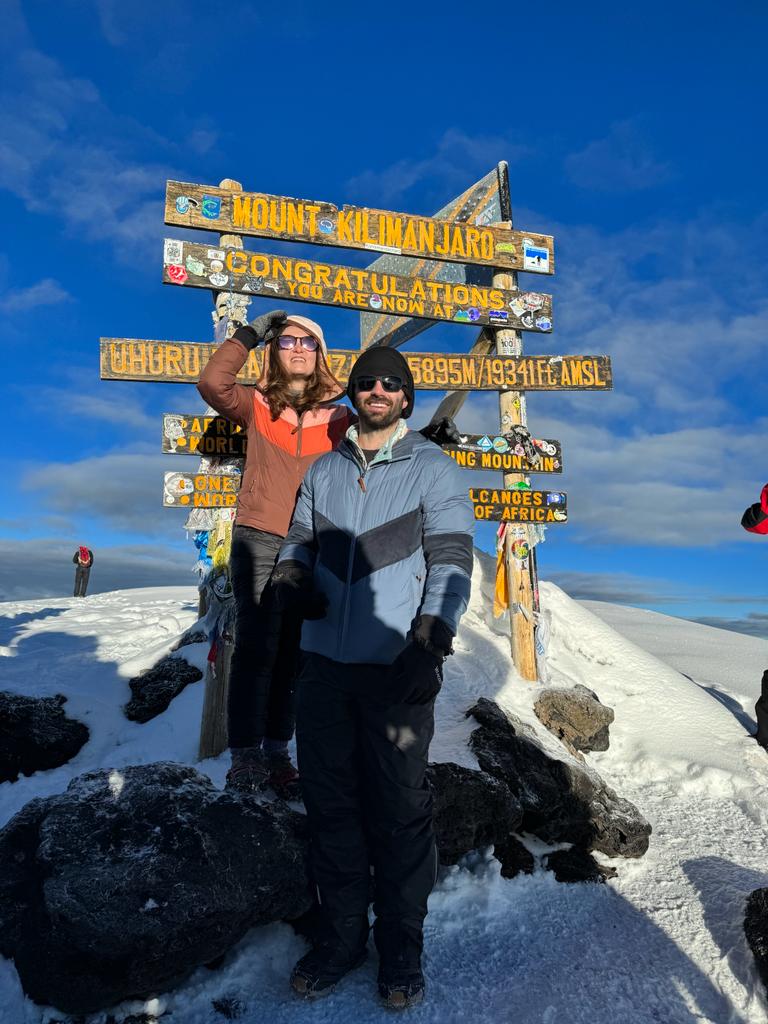
During my research, I often saw people trying to draw comparisons between Kilimanjaro vs. Inca Trail. While I think it’s difficult to compare them because they really are quite different experiences, I can see why someone might be deciding between the two. They are both famous multi-day treks any hiking/nature enthusiast would love.
If you’re limited on time and money, you might be trying to decide between which is more worthwhile for you. That’s why I’ve written this post to help you compare between the two and decide which is the better option, based on the experience you’d prefer.
TL;DR
I’ve elaborated more below, but here is a quick comparison between the two.
Kilimanjaro vs. Inca Trail:
| Kilimanjaro | Inca Trail | |
| Location | Freestanding mountain in northern Tanzania; stay in Moshi or Arusha before/after | Andes Mountain range in Peru; stay in tourist-friendly towns of Cusco & Aguas Calientes before/after |
| Views | Sweeping views of Tanzania, including towns of Moshi and Arusha from above | Views of surrounding Andes mountains and valleys, including ancient Incan ruins |
| Difficulty (subjective) | Challenging | Not very challenging |
| Typical number of days | 6-8 | 4 |
| Altitude | Highest point = 19,341 ft (5,895 m); no easy opportunities to acclimate pre-trek | Highest point = 13,828 ft (4,215 m); recommended to spend time acclimating in Cusco pre-trek |
| Terrain & Vegetation | Very diverse: Jungle rainforest, moorland, alpine desert | Somewhat diverse: Rainforest, high-altitude grassland |
| Wildlife | Some opportunities to see monkeys, rare sightings of other wildlife (e.g., dik-dik) | Many opportunities to see llamas |
| Weather | Likely to experience sun, rain and snow, potentially hail | Likely to experience sun and rain |
| Cost | ~$2,400+ USD for a 7/8 day trek per person | ~$700+ USD for a 4-day trek per person |
| Independence | Low guide-to-tourist ratio, always meant to be accompanied by guide | Higher ratio, can hike more independently, depending on group |
| Culture & History | Depending on guides, can learn some Tanzanian history and Swahili words & songs | Will visit several Incan ruins and learn Inca/Quechua and Peruvian history lessons |
| Journey (very subjective) | Focused on reaching the summit | Focus on journey of trek and ruins |
Read to learn more about each of these points!
Location
Kilimanjaro – Moshi & Arusha
Kilimanjaro is located in northern Tanzania, close to the Kenyan border. It is a freestanding mountain, which means it’s not part of a mountain range. You’ll likely stay at least one day in Moshi or Arusha before and after your trek.
These cities certainly have plenty to offer to tourists. The Chemka hot springs are popular, as well as waterfall hikes and nearby coffee farms. There are also tourist spots in the city of Moshi, like the Old Railway Station.
One major hindrance, though, is that it’s not super easy to get around. Moshi and Arusha are not very walkable between attractions, so you will need to travel by car or motorbike. There can also be a lot of traffic during the day, which can increase the length of time it takes to get from place to place. So, you don’t want to try to pack too much in on your first day, or if you have a flight to catch.
Inca Trail: Cusco & Aguas Calientes

The Inca Trail is located in Peru, in the Andes Mountains. That means you will be walking through a mountain range throughout your trek. The vast majority of people stay in Cusco for two days or more before starting the Inca Trail. Cusco is located at just over 11,000 feet (3,399 meters), which helps you adjust to altitude before your climb.
If you’re doing okay with the altitude, you can spend a couple of days exploring the city of Cusco. There are ancient Incan ruins, museums and markets to explore throughout the city. If you’re feeling up to it, you can also take day trips around the Sacred Valley or to Rainbow Mountain from Cusco.
After reaching Machu Picchu, you’ll visit the tourist town of Aguas Calientes. This small town definitely feels kitschy – almost like Disney – so you’re not getting the most authentic Peruvian experience. But it is still interesting to check out the hot springs and walk around the town after four days trekking through the Andes.
The main difference between the pre- and post-trek locations for Kilimanjaro vs. Inca Trail is the tourism infrastructure. Cusco and Aguas Calientes are definitely built with tourism in mind, especially the latter. Meanwhile, traveling through Moshi or Arusha will take a bit more effort.
Views
Because one trek takes you up and down a freestanding mountain, and the other goes through a mountain range, the views can really differ.
As a freestanding mountain, Kilimanjaro really does not have much in the way of obstructing views of the mountain’s surroundings. After you pass the jungle rainforest sections, you get more sweeping views of northern Tanzania. There are certain sections of the climb where you can see for miles, including the towns of Moshi and Arusha. There are several sections where you can also spot Mount Meru, another giant stratovolcano in northern Tanzania.
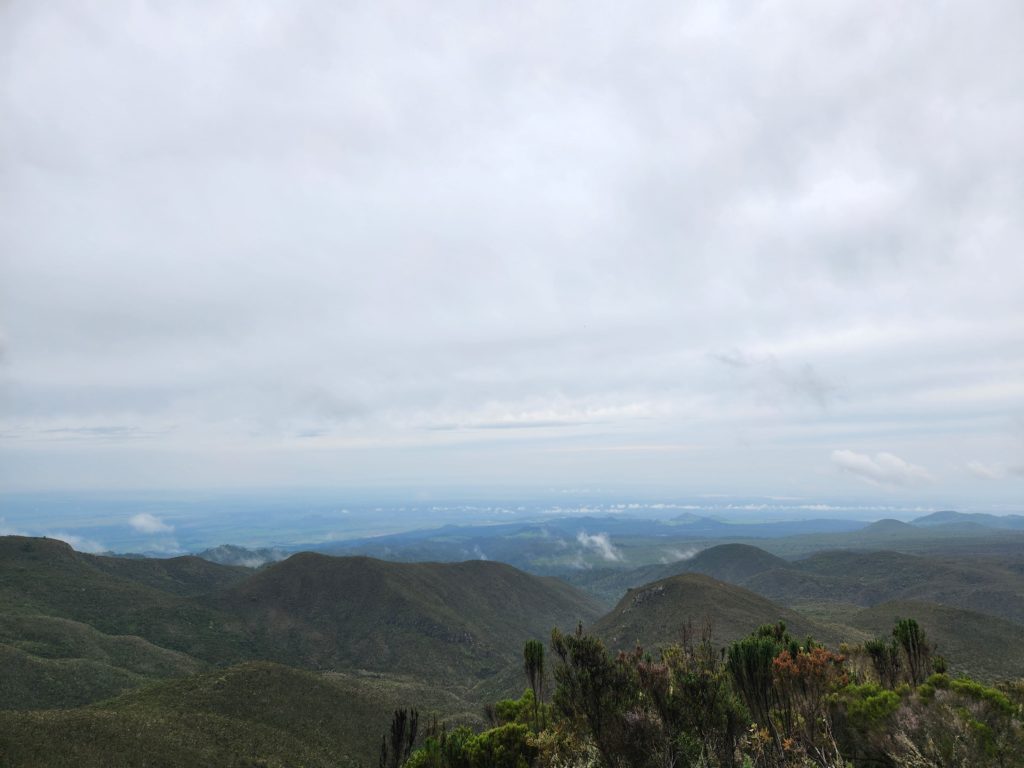
The Inca Trail, on the other hand, is in the middle of the Andes mountains, one of the longest mountain ranges in the world. Throughout your entire trek, you will have views of the Andes mountains surrounding you. You’ll also get views of the valleys, as well as plenty of ancient Inca and Quechua ruins. There are even occasions where you can get up close to some of these ruins. During the Inca Trail, you’ll definitely feel like you’re deep among the mountains compared to Kilimanjaro.

Difficulty
This area is where I must stress that my experience is entirely subjective. But I really did not find the Inca Trail challenging at all. In fact, I didn’t even realize how many people might struggle to complete the Inca Trail until after the trek.
However, I did more research on other people’s experiences before Kilimanjaro and knew it would be more challenging. While the hike itself is not too hard, there a few things that make it harder than Inca Trail:
- Altitude: The highest point on the Inca Trail is just under 14,000 feet, compared to Kilimanjaro’s nearly 20,000
- Length: It’s always going to be tougher to hike more days in a row rather than fewer, and a Kilimanjaro trek is about twice as long as the Inca Trail
- Summit Day: Summit day on Kilimanjaro is about an 18-hour day that starts at midnight. Not only is the day long and hard, with steep trails both uphill and downhill, but you’re also completing it with very little sleep, food and caffeine.
- Summit Pressure: Maybe just me, but the pressure of knowing that the summit is the end goal, and the only way to get there was completing the trek made it tougher mentally. Compare that to the Inca Trail where you can visit Machu Picchu even if you don’t finish the trek.
So, although the Inca Trail might have longer days and climbs on average, Kilimanjaro is overall more challenging to complete. I did train the similar ways for both Kilimanjaro and the Inca Trail.
Number of Days
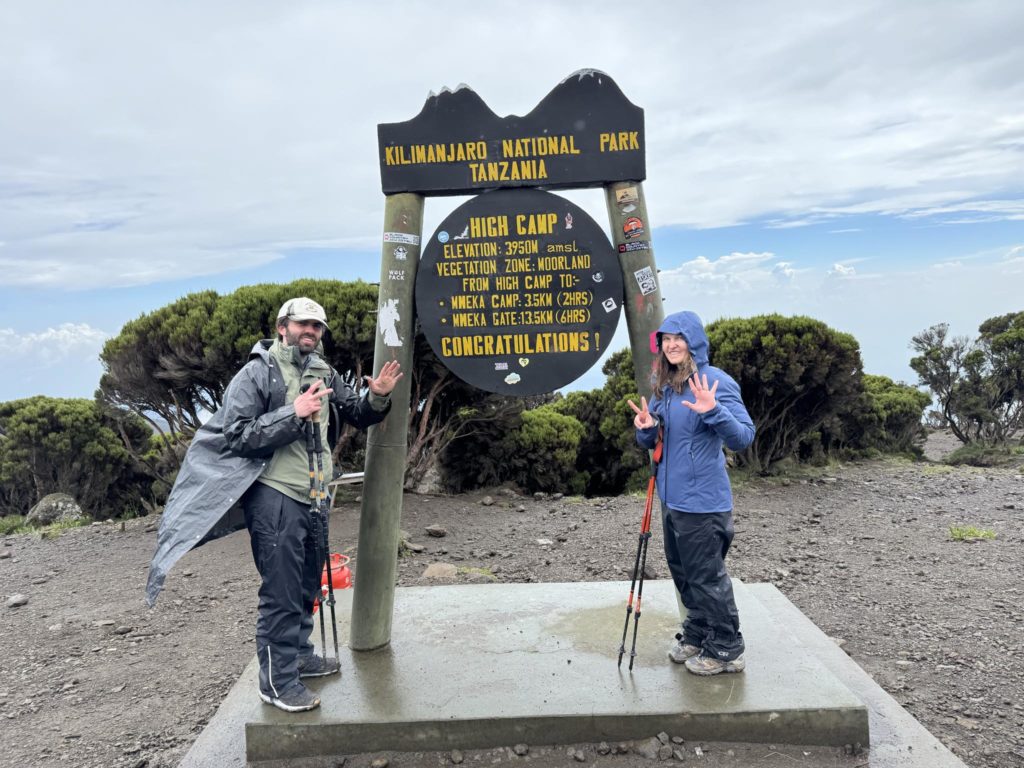
The number of days to climb Kilimanjaro depends on what route you take. It can take anywhere from five to 10 days, but most people take between six and eight. Longer climbs are encouraged as they help you better acclimate to the altitude, especially if you’re coming from sea level.
The Inca Trail just covers one route from the Sacred Valley to Machu Picchu. It takes the vast majority of people four days of trekking. There are some very rare outliers that will take three days or five days to trek, depending on fitness level and trekking company. Note, there are different treks through the Andes to Machu Picchu, like Salkantay and Lares, but this post just focuses on the classic Inca Trail.
If time is a major factor when considering Kilimanjaro vs. Inca Trail, know that Inca Trail will take about half as many days for most people. Still, multi-day treks can be even more special the more time you spend on the trail.
Altitude
The summit of Kilimanjaro is nearly 20,000 feet (5,895 meters). During your trek, you also have some occasions of hiking high and sleeping low to help acclimate to the altitude. One major example of this was when we climbed to Lava Tower on day four of the eight-day Lemosho trek. Lava Tower sits at just over 15,000 feet (4,600 meters), then you camp at just under 13,000 feet (3,900 meters). Base camp also sits at around 15-16,000 feet 4,600+ meters) for most trekkers.
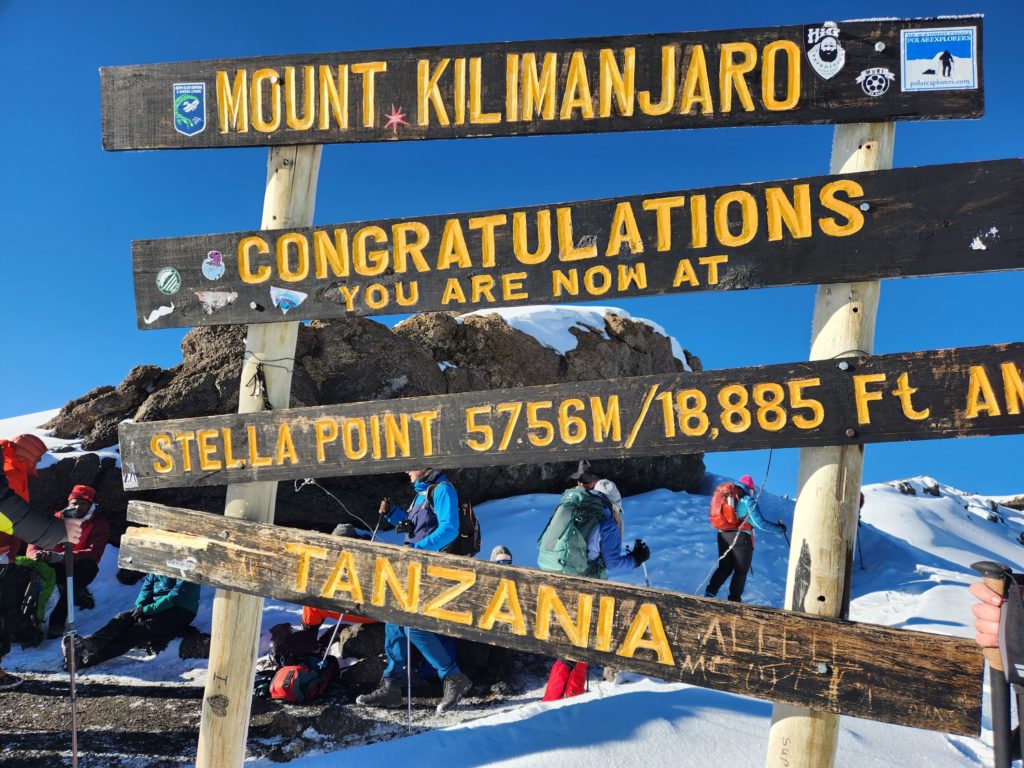
The highest point on the Inca Trail is Dead Woman’s Pass, which is at just under 14,000 feet (4,215 meters). Most trekkers reach this point on the second day of the trek, and sleep at a much lower elevation. You never sleep above 13,000 feet for the entirety of the Inca Trail trek.
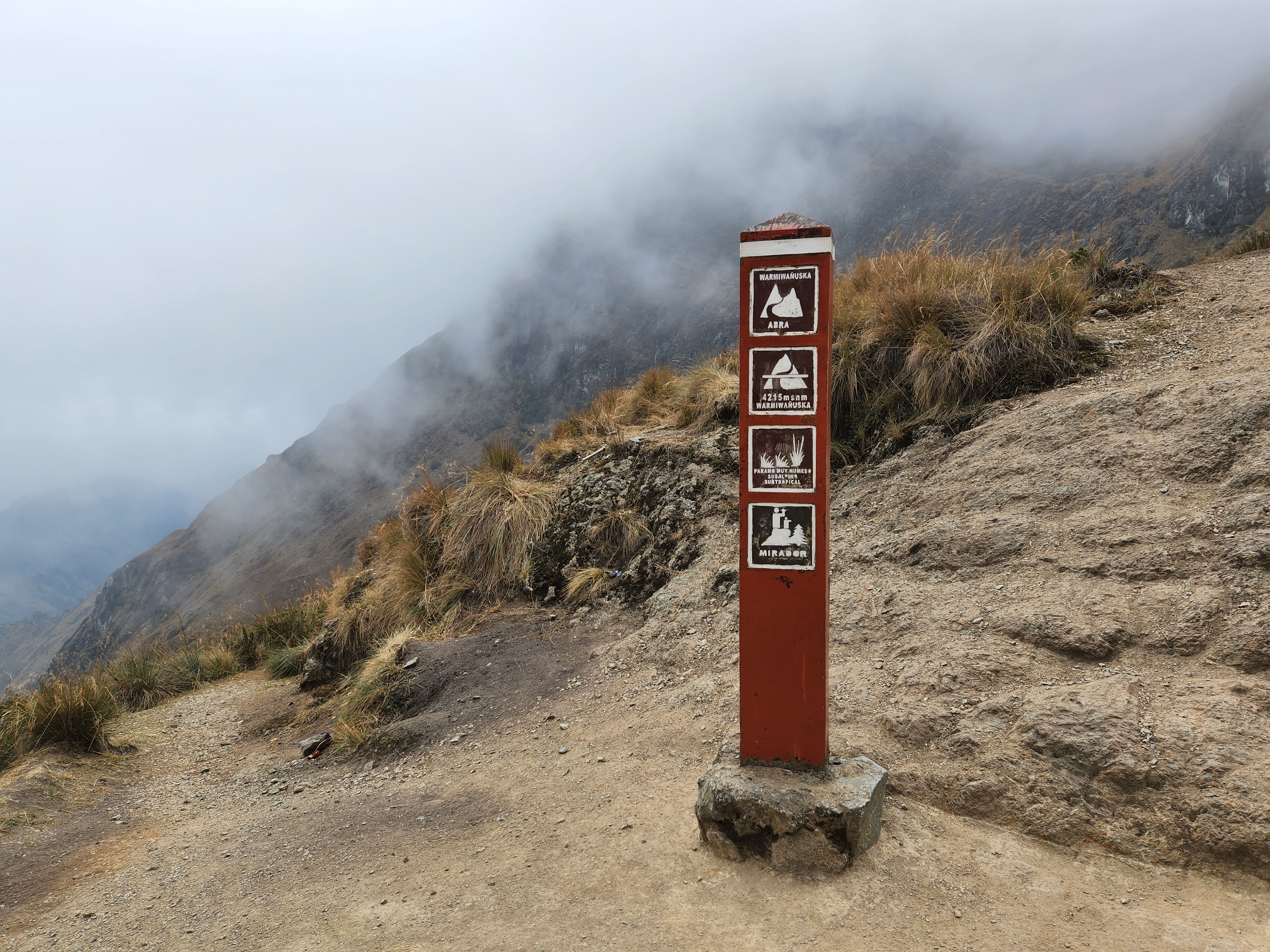
In addition to the Inca Trail sitting at a lower elevation overall, you also get a better opportunity to acclimate before you even begin. It’s recommended to get into Cusco two or more days before your trek to start getting used to the altitude. This opportunity for acclimatization can make it even easier to trek multiple days at altitude if you’re coming from sea level.
Overall, the Inca Trail is at a lower altitude with more opportunities to adjust to high altitude before starting your trek. There are multiple days on Kilimanjaro where you’ll be at a higher elevation than anything you’d have the opportunity to experience on the Inca Trail. If you’re typically bad with altitude and are considering Kilimanjaro vs. Inca Trail, the latter might be a better call.
Terrain & Vegetation
On a Kilimanjaro trek, you’ll pass by several types of terrain. Depending on which route you choose, you’re most likely starting your trek in the jungle rainforest. As you climb, you go from rainforest to moorland to alpine desert before returning to moorland the rainforest. The vegetation is very diverse, especially in the rainforest. It’s interesting to watch the transformation of the vegetation, as the trees and shrubs get shorter the higher you climb.
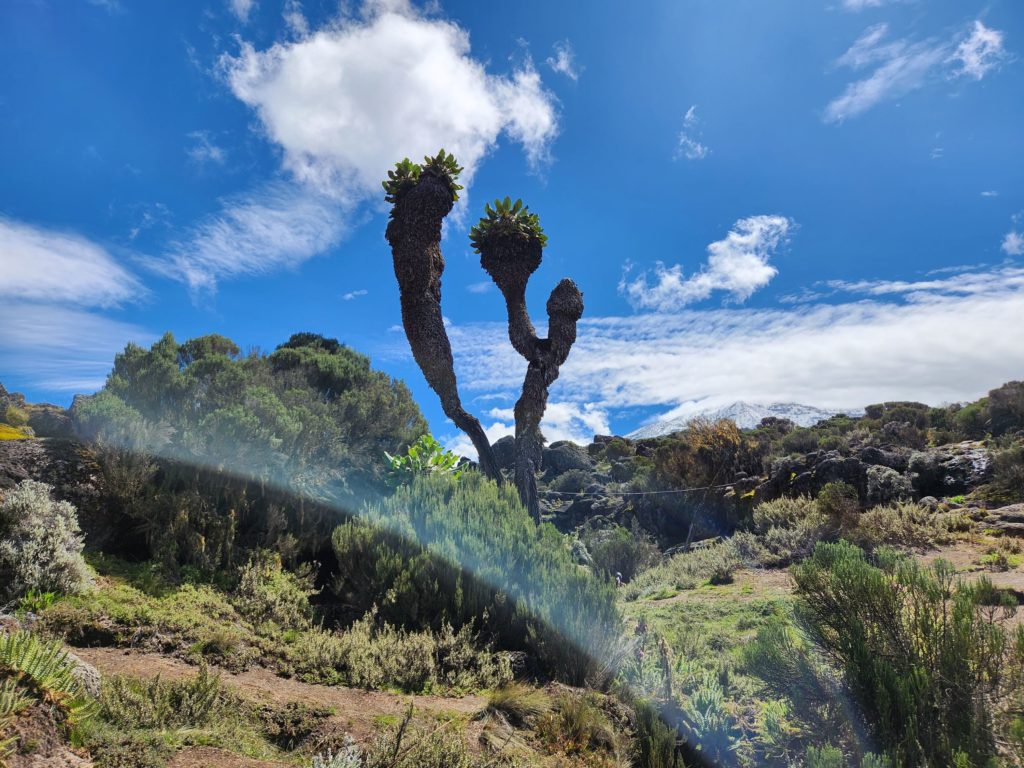
During the Inca Trail, you also get exposure to different terrains and learn about this region of the Andes mountains. You pass through rainforests and high-altitude grassland. Depending on weather, you might also walk through a cloud forest. However, the terrain differences are less extreme than Kilimanjaro.
The guides on both Kilimanjaro vs. Inca Trail are meant to be trained in the flora and fauna of these trails. My guides on both treks were very knowledgeable in this regard. I thought both treks were equally interesting in these areas, though Kilimanjaro is more diverse.
Wildlife
Similar to terrain, the wildlife on Kilimanjaro can also be quite diverse. Mount Kilimanjaro sits in a national park that is home to a wide range of Tanzanian wildlife. It’s quite common to see colobus and blue monkeys and a variety of birds. There is one area on the mountain known as “Simba Cave” because it used to be home to lions. On my trek, I also saw a dik-dik, a small East African antelope.
One of the less common routes, Rongai, is known for wildlife spotting. You have a non-zero chance of even seeing elephants on this route.
Meanwhile, the Inca Trail is also home to different wildlife. Similar to Kilimanjaro, you’re going to see plenty of birds, including the biggest hummingbirds I’ve ever seen. But the most exciting wildlife is the llamas. There are wild llamas all throughout the trail, including when you arrive at Machu Picchu.
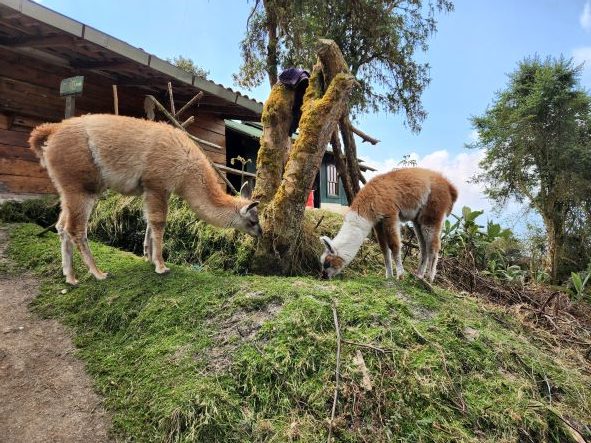
Weather
Peak trekking season for both options are similar. However, weather can be unpredictable in the mountains no matter the continent.
Tanzania might be on the equator and warm year-round, but Kilimanjaro has its own microclimate. You can (and probably will) face sun, rain, snow and possibly even hail during a trek. As you climb higher, you have to try hard to ensure you stay warm. It is helpful to pack or rent crampons, as well as comprehensive rain gear.
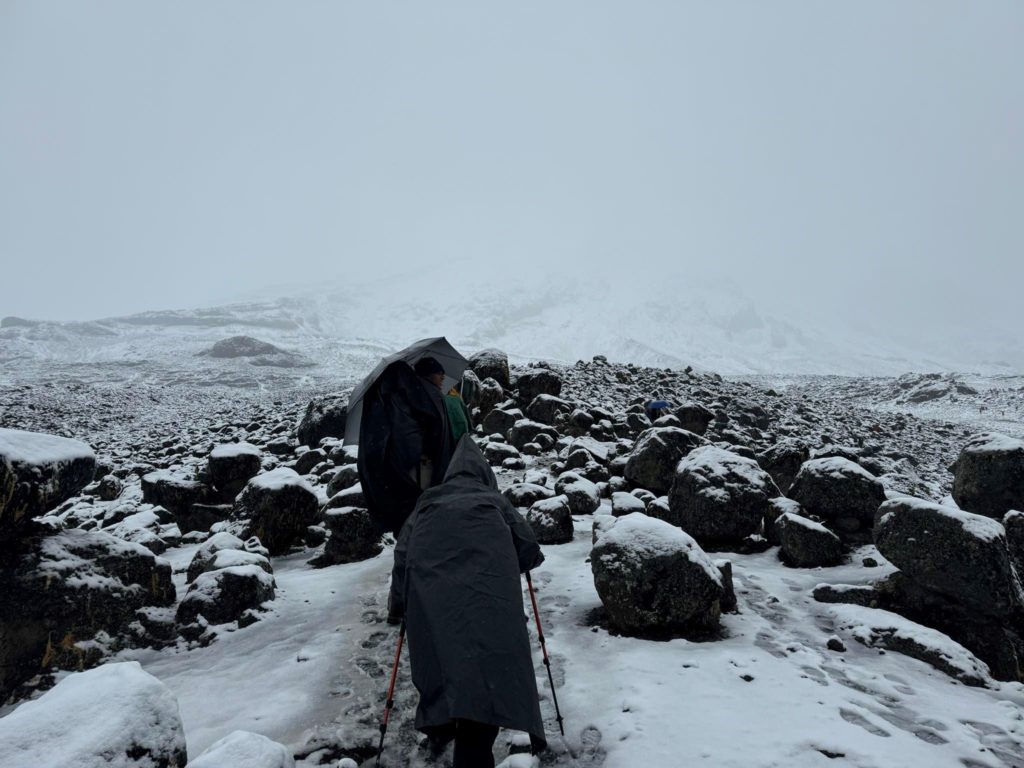
The weather on the Inca Trail can also be less predictable and different from the rest of Peru during the time of the trek. However, you’re most likely to face sun and rain, but unlikely to see snow and hail. While you should pack a good poncho, you don’t need to have as much rain gear as Kilimanjaro to stay dry. You also will not get as cold as on Kilimanjaro.
While Kilimanjaro is colder and more exposed to the elements, you should not let this deter you from the trek. Just make sure you pack accordingly.
Cost
Because Kilimanjaro is a longer, more strenuous trek that requires more manpower than the Inca Trail, it is more expensive. The Tanzanian government supports the Kilimanjaro Porters Assistance Project (KPAP), which guarantees fair wages and treatment for all porters and guides for member operators.
An Inca Trail trek will be less than half the cost of a Kilimanjaro trek, if you’re traveling with a responsible operator. This price difference is due to trekking for fewer days, requiring fewer porters and a less strenuous trek overall. I also found Peru cheaper than Tanzania in general, but I’m not actually sure how prices compare.
If you’re on a tighter budget, an Inca Trail trek is definitely going to be more cost-effective than Kilimanjaro.
Independence
Due to the nature of a Kilimanjaro trek, there is less independence than the Inca Trail. If you’re trekking with a responsible operator, they will have a solid guide-to-tourist ratio and ensure you’re basically always with a guide. Even at camp, if we wanted to venture farther from our campsite, our assistant guide accompanied us. On a Kilimanjaro trek, the guides also set the pace and require you to go “pole-pole” (slowly). The idea is that the more slowly you climb, the better it will be to acclimate to altitude.
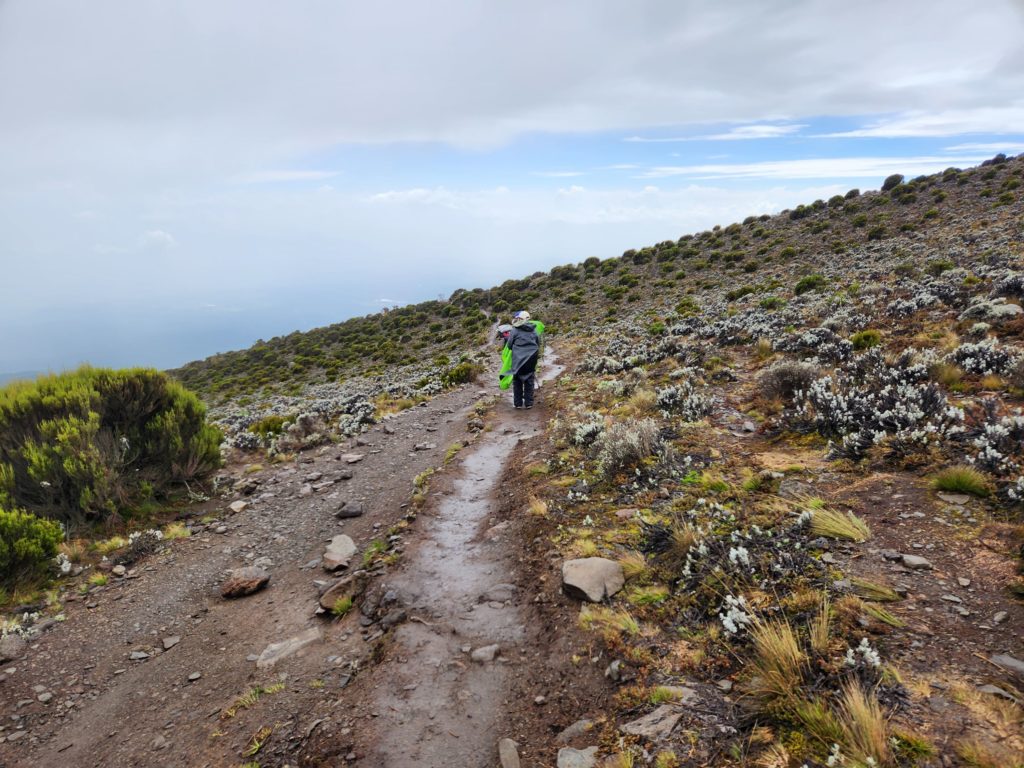
There is a lot more independence on the Inca Trail, if you want it. We had a 4:1 guide-to-tourist ratio on the Inca Trail, compared to the 1:1 ratio on Kilimanjaro. On the first day, we trekked with the full group. Then, since we proved ourselves as strong hikers on the first day, our guide let us hike more independently on the second day so we could go at our own pace while the other trekkers climbed a bit more slowly.
Culture & History
One of the biggest differences between a Kilimanjaro and an Inca Trail trek is the exposure to culture and history you get in the two treks. Inca Trail guides are trained in Incan and Peruvian history and will share it throughout your entire trek, especially when you come across all the different Incan ruins scattered throughout the trails.
The Inca Trail is literally the same path that was paved for the Inca Emperor. The Quechua tore up the beginning and end of the path when the Spanish invaded to hide the trail and Machu Picchu. When it was re-discovered in the early 1900s, the trail was also discovered.
Because it was the trail for the Inca Emperor, there are a lot of stops along the way. For example, you can visit ruins where the emperor would stay during the trek to commune with the priest and pray to Pachamama at glacier-shaped altars. These experiences are part of what make the Inca Trail feel like a bit of a spiritual pilgrimage in addition to a physical challenge.

A Kilimanjaro trek does not feel quite as steeped in history and culture. While you can get lessons in flora and fauna during a Kilimanjaro trek, as well as some Swahili lessons, there is less historical and cultural immersion. Depending on your guides, you might get some information about the history and culture of Tanzania and the mountain, but it is not inherently part of the trek as on the Inca Trail.
Journey
Finally, the journey of Kilimanjaro vs. Inca Trail can be quite different. As much as I tried to tell myself to focus on the journey rather than the destination on Kilimanjaro, it was really difficult to avoid obsessing over making it to Uhuru Peak. I knew it would feel like a waste of time and money if I didn’t make it, and I honestly was unprepared for that possibility – as much as I tried to tell myself I’d be satisfied with the lessons learned along the way.
I think it’s potentially easier to stay focused on the journey on the Inca Trail. For one, it’s possible to get to Machu Picchu even without completing the Inca Trail. You also get to experience the magic of the Andes Mountains and Inca ruins along the way.
Kilimanjaro vs. Inca Trail: Final Thoughts
I will say, the journey of the Inca Trail felt more spiritual to me than Kilimanjaro. But Kilimanjaro felt like more of an accomplishment. If you have the time and money, I’d encourage you to experience both if you’re interested! But if you haven’t done a long, multi-day trek before, definitely start with the Inca Trail.
I do think both treks have their pros and cons. If I had to choose one to redo, I’d probably choose the Inca Trail, but I’m very glad to have experienced both.
Would you choose Kilimanjaro or the Inca Trail?


